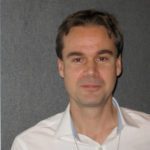Link to Pubmed [PMID] – 34509507
Link to DOI – S0006-3495(21)00748-710.1016/j.bpj.2021.09.014
Biophys J 2021 10; 120(20): 4325-4336
Repeat-induced point mutation is a genetic process that creates cytosine-to-thymine (C-to-T) transitions in duplicated genomic sequences in fungi. Repeat-induced point mutation detects duplications (irrespective of their origin, specific sequence, coding capacity, and genomic positions) by a recombination-independent mechanism that likely matches intact DNA double helices directly, without relying on the annealing of complementary single strands. In the fungus Neurospora crassa, closely positioned repeats can induce mutation of the adjoining nonrepetitive regions. This process is related to heterochromatin assembly and requires the cytosine methyltransferase DIM-2. Using DIM-2-dependent mutation as a readout of homologous pairing, we find that GC-rich repeats produce a much stronger response than AT-rich repeats, independently of their intrinsic propensity to become mutated. We also report that direct repeats trigger much stronger DIM-2-dependent mutation than inverted repeats. These results can be rationalized in the light of a recently proposed model of homologous DNA pairing, in which DNA double helices associate by forming sequence-specific quadruplex-based contacts with a concomitant release of supercoiling. A similar process featuring pairing-induced supercoiling may initiate epigenetic silencing of repetitive DNA in other organisms, including humans.

